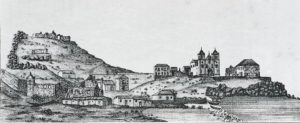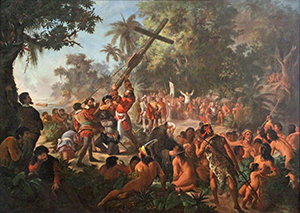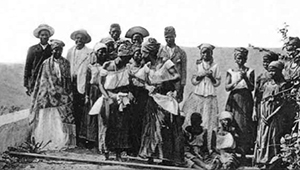
Discovery of the Cabo Verde archipelago.

Foundation of Ribeira Grande, the first city built by the Portuguese in Africa and the first capital of Cabo Verde. Known today as Cidade Velha (Old City).

IN THE WORLD
To end the dispute of possessions in the “New Continent”, Portugal and Spain sign the Treaty of Tordesillas, which delimits the territories of each party in South America.
Cabo Verde is the landmark from which the line defined by the Treaty of Tordesillas is drawn, 370 leagues to the west.

Construction of the chapel of Nossa Senhora do Rosário, which became a church in 1652 and is the oldest in Cabo Verde.
“Ribeira Grande was, yes children, a stage for the meeting of musicalities; Iberian musicalities, first of all. The sources tell us of billed guitars, drums, and fifes brought by countless sailors who populated the almost amphibious arteries of Rua do Porto and Rua do Calhau. Other instruments came from the hands of the clergy, the music-loving Catholicism, who loved festivities, enlivened by flutes, trumpets, bass guitars, sackbut trombones, bassoons, and tenors. Even if the data is scarce in this respect, we have reasons to suspect that Ribeira Grande was a musical city, or even a musical “babel” (…)”.

IN THE WORLD
April 22nd marks the arrival of the Portuguese in Brazil, with the expedition led by Pedro Álvares Cabral.

On January 13, 1533, by Papal Bull (Pio Excellenti) of Pope Clemente VII, the Diocese of Santiago de Cabo Verde was created and on this same date the Village of Ribeira Grande was elevated (by juries) to the category of City.

Father António Vieira, traveling from Portugal to Brazil, disembarks in Ribeira Grande and preaches in the Church of Nossa Senhora do Rosário. Then write what was found there.
“(…) clergymen and canons as black as jet-black; but so composed, so authoritative, so learned, such great musicians, so discreet and well bred, that they can make envious those we see there in our cathedrals.”
This is possibly the oldest known historical reference mentioning any musical practice in Cabo Verde.
By Royal Charter of February 6, 1652 it was determined (because of several pirate attacks on the city of Ribeira Grande) that from now on the bishop and the governor would reside in Vila da Praia.

On December 18, 1769, the central administration (seat of government of Cabo Verde) was transferred from the city of Ribeira Grande de Santiago to Vila da Praia. The governor was Joaquim Salema de Saldanha Lobo.

Prohibition of Batuku: on September 16, 1772, Governor Joaquim Salema de Saldanha Lobo prohibits “Zambunas, Choros and Reynados on the island of Santiago.
“I make known to the inhabitants of this island that because it has come to my notice, and indeed it has been seen continuously the disorder, which is born of making Reynados, and public Zambunas at night, with so much excess, that it is in every way scandalous to God, and a disturbance to the Laws, and public peace …”
